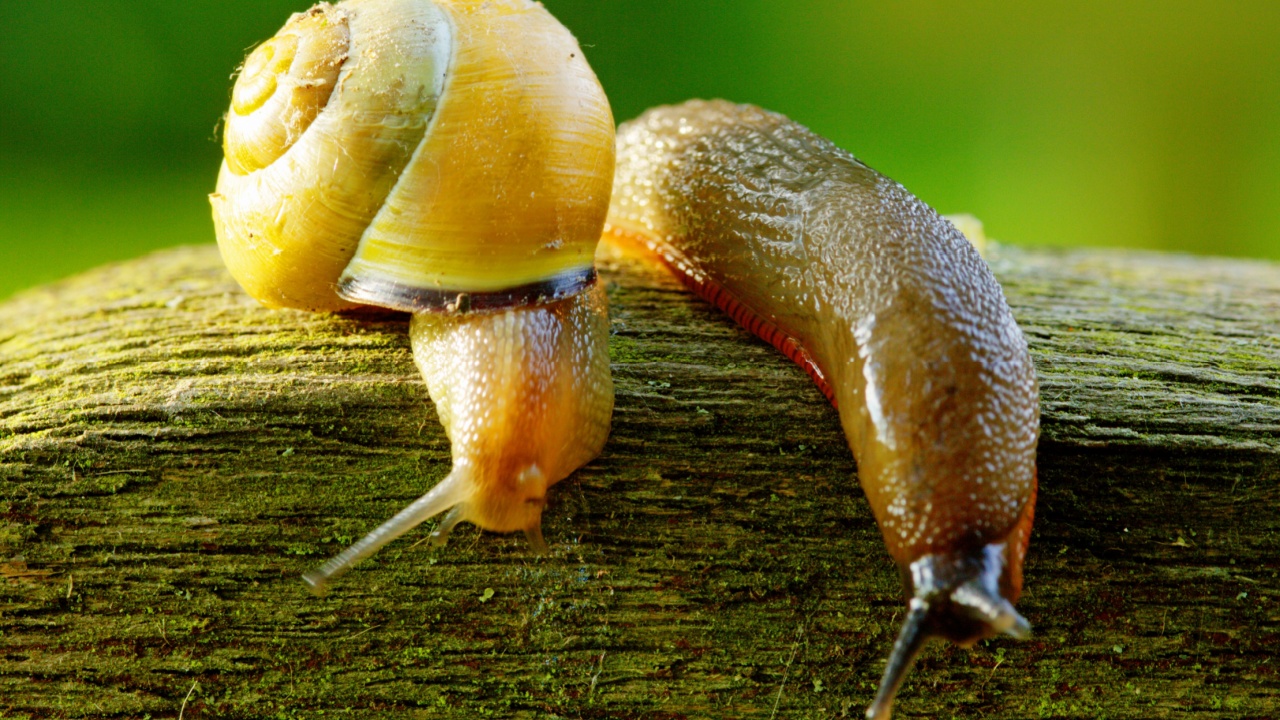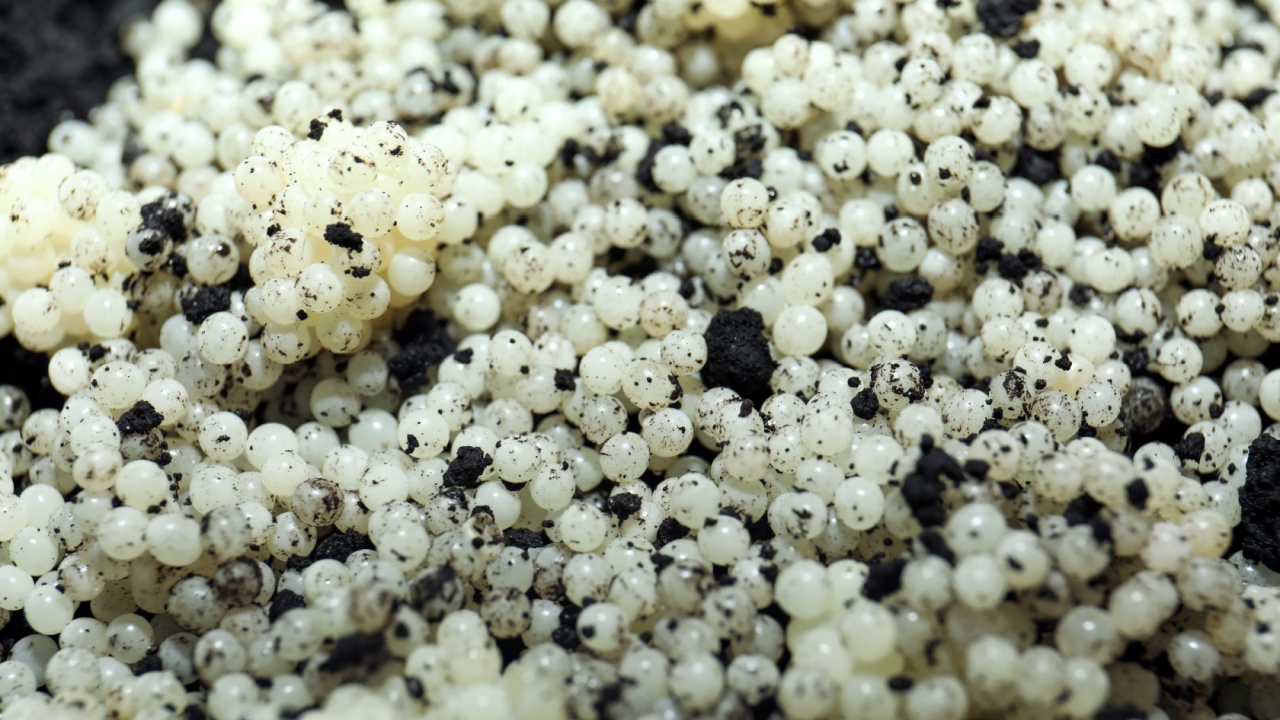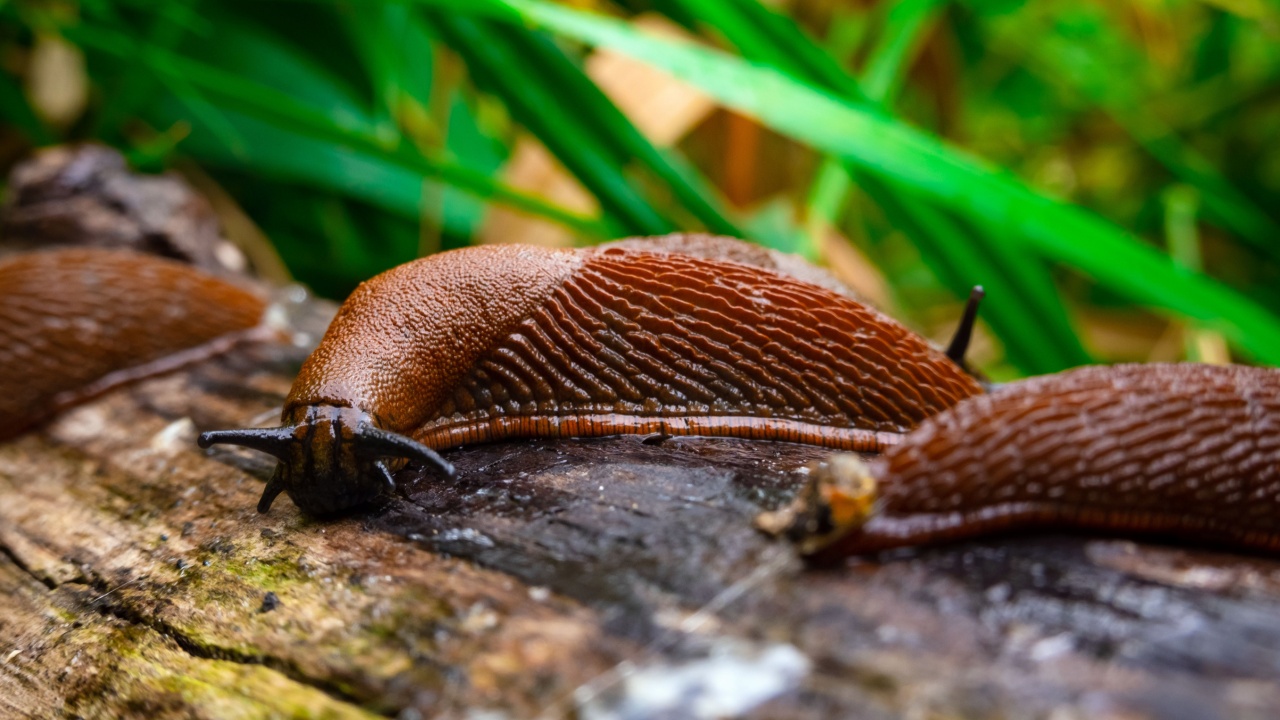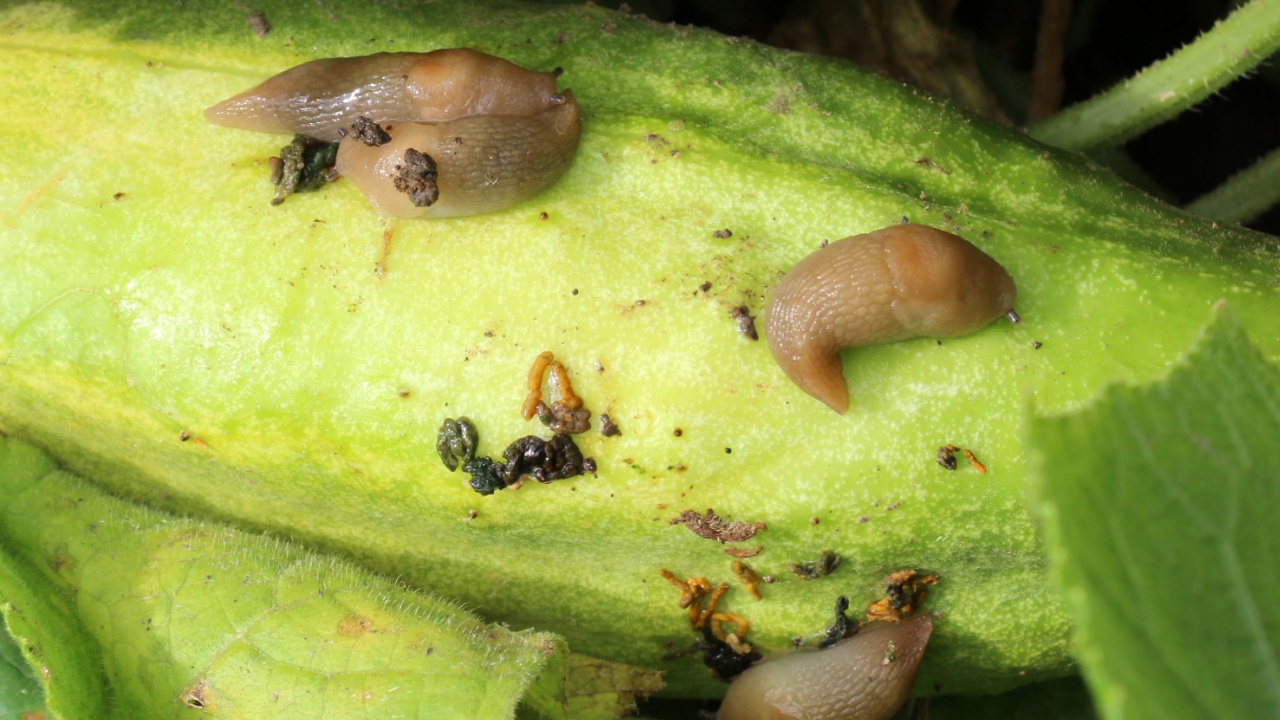Slugs. An absolute menace in the vegetable garden. These pests will devour just about anything. None of our fruit or vegetable plants are safe.
Frustrating and intensely irritating, yes. But slugs are also really interesting – and vital to the natural cycle, as they aid in rapid decomposition and return much-needed nutrients to the soil. Here are my most fascinating facts about slugs.
1 – Slugs Evolved From Snails

Snails have a kind of exoskeleton in the form of a shell and have the ability to retreat inside in the face of danger or when it’s too hot and dry.
Slugs evolved without the shell, scientists believe, due to lack of calcium in the environment and high dampness or humidity levels.
Not all signs of the shell have vanished among the majority of slug species, however. They have a vestigial shell in the form of a leathery mantle that sits on their back. The mantle consists of a soft but leathery outer layer, with a semi-hard calcium “shell” beneath.
2 – You Can Only See 5 Percent of Slugs

Think you’ve got a bad slug problem because you can see a few hundred slugs devouring your lettuces? Well, you’re only seeing around 5 percent of the problem.
Only between 5 and 10 percent of slugs are above ground. The remaining 90 to 95 percent of the slug population is below ground. And that’s not accounting for all the eggs – that’s literally just the percentage of juvenile and adult slugs that are underground, chomping on seedlings and roots.
Obviously, the slug population will vary according to where you live, but to give you some idea, studies show that the average garden in the UK plays host to around 20,000 slugs.
3 – Asexuality

Slugs have both male and female genitalia. If there are no suitable mates, slugs can impregnate themselves. So, when two slugs mate, both get pregnant as they exchange sperm.
Slugs partially encircle one another, then their male genitalia appears from beneath their mantles. The male parts of the slugs join together in a kind of corkscrew to exchange sperm.
However, they frequently get stuck like this. Then one slug will chew off the penis of its partner or even its own to get “unstuck”. The victim, however, can survive with just female genitalia and can continue to breed.
4 – 90,000 Descendants Each

A single slug lays up to 100 eggs several times each year. And bearing in mind that, mostly, when slugs mate, both get pregnant, you can see how quickly 1000s of slugs can appear. A single slug can accumulate a staggering 90,000 descendants during its lifetime.
5 – Just When You Think It’s Safe

Slug eggs are those tiny pearly white balls you find in the soil as you dig. Small, round, delicate, and easy to squish. But they are remarkably resilient.
Slug eggs can lay dormant for years and only begin to hatch when conditions are optimal. So, even if you’re sure you’re totally on top of controlling slugs naturally, there can, in fact, be thousands of eggs in your soil, just waiting for the perfect conditions.
6 – Stomach Foot

Slugs are gastropods. Which literally means stomach foot. The foot, which is the flat bottom side of the slug, is essentially a powerful muscle.
This muscle contracts in rhythmic waves while the slug secretes the notorious slime at the same time. This allows the slug to glide across the slime as its foot contracts.
7 – Teeth!

Yes, slugs have teeth. 27,000 teeth to be precise. They use this ridiculous number of teeth to rasp away at their food, hence they leave such ragged holes in leaves. Who would think that a slug has more teeth than a shark? And, just like sharks, slugs regularly lose and replace teeth.
8 – Surprisingly Stretchy

Disturbingly, slugs can stretch to 20 times their standard length at will. That’s why it’s so difficult to keep slugs out of specific areas. They can stretch out and wriggle through tiny holes.
9 – Green Blood

If you start skewering slugs or decapitating them as a natural method of control, or, if you accidentally squish one under your boot, you’ll see that they exude green-yellowish blood. This is due to the molecule, hemocyanin, that transports oxygen in slugs.
10 – They Eat A Lot

Slugs are voracious eaters, consuming up to twice their bodyweight in just one day. And they’ll eat pretty much anything. Soft fruits and veggies, and those with high water content, like strawberries, are particularly attractive.
11. Multipurpose Slime

Slug slime is gross. But for the slug, it’s crucial. Firstly, it allows them to glide the foot muscle along the ground as described above.
A slug’s slime is as unique as human fingerprints. That’s pretty amazing. They use this uniqueness to find their way to and from shelter, particularly tasty patches of vegetation, and more.
The slime is also highly absorbent, so water simply makes it more effective, hence it’s so difficult to wash off your hands. Slime contains special fibers that make it extra sticky and helps to ensure slugs can make vertical climbs without sliding backward, so you may even encounter slug problems when growing in a vertical garden.
12 Mucus For Survival

Slugs are fascinating creatures, made up of 90% water, which puts them at risk of drying out easily, and exacerbated by not having shells. To prevent this, they produce protective layers of mucus. This slimy barrier is crucial, but not always enough to keep them hydrated. That’s why slugs are most active after rain, when they’re at less risk of drying out and can more with more ease. The rest of the time, you’ll find them seeking out moist environments under rocks or logs to conserve moisture.
13. Slugs Are Sloooow

With a top speed of just 0.18 miles per hour, it’s unlikely slugs will win any races against anything other than other slugs, and maybe snails. In comparison, fit, healthy humans can walk at a sustained pace of around 3 miles per hour. So, if a human were to put in a full day – or 8 hours of walking – they could achieve a maximum distance of just over 26 miles (42 kilometers), whereas a slug would take 145 hours (or just over 6 days) to walk the same distance.
14. Two Pairs of Tentacles With Different Jobs

Slugs really are interesting. Yes, they’re slimy, yes, they eat your plants, but they’re incredible creatures.
Slugs have four tentacles. All of them are retractable. Probably most of the slugs you see in your yard look like they just have two tentacles, but they have four. It’s just that two are retracted.
One pair of tentacles are responsible for seeing and smelling, and the second pair are for tasting and touching. Isn’t that interesting? The tentacles are also super-sensitive, hence they rapidly retract if you lightly touch them.
Even more incredible is that the pair of tentacles for seeing and smelling can work independently from each other. So one can look at you while the other can smell that the soil it’s sitting on.
15. Some Slugs Are Huge

While most slugs are quite small, some species can reach impressive sizes. The European ashy-gray slug grows up to 10 inches, while the American banana slug can reach a whole foot.
16. Some Slugs Are Useful Predators

Not all slugs stick to a diet of plants. Some, like the ghost slug, prefer a carnivorous diet, hunting down worms. Some slugs will also eat other slugs. And, because most slugs are generalists, they’ll feed off carrion, helping to speed up decomposition.
17. Some Slugs Can Detach Their Tails

The taildropper slug can detach its own tail to escape a predator and then grow back the missing appendage over time. This is a fascinating evolutionary survival tactic. The slug’s predator is distracted by the tail, thinking it’s gotten its prize, while the slug makes an (albeit slow) dash for cover.
18. Slugs Are Boneless

Being part of the mollusk family, slugs are invertebrates, meaning they lack bones. This boneless structure allows them the flexibility to move through tight spaces and across various terrains without the constraints of a rigid skeleton.
19. Most Active At Night

Slugs prefer the cooler, moist conditions of nighttime or rainy days for their activities. They’re less likely to venture out during sunny days to avoid the drying effects of the sun. But if you wander into your garden in mild weather at dusk, you’ll likely see an army of slugs and snails trekking out of their moist, cool daytime hidey holes.
20. How to Control Slugs Naturally

Slugs are a real pain if you’re growing your own food, but I’ve got plenty of effective ways to control slugs naturally. These natural methods work and don’t cost a dime.
- Read More: How to Control Slugs Naturally
21. Ants Farming Aphids & What to Do About It

Ants farm aphids. They care for them, offer protection, and literally “farm” them – much like humans farm their livestock. Picture ants wearing the frayed straw hat, dirty blue dungarees or coveralls, and the good ol’ fashioned wellies.
- Read More: Ants Farming Aphids & What to Do About It
22. Maggots In Compost: Your Questions Answered

Maggots are a common sight in compost piles and bins, but what do they do? What kind of maggots should you expect to find in your compost bin? How can you get rid of maggots if they become a problem? Can you use compost that has maggots? Find out!
- Read More: Maggot In Compost: Your Questions Answered
Katy Willis is a writer, lifelong homesteader, and master herbalist, master gardener, and canine nutritionist. Katy is a preparedness expert and modern homesteader practicing everyday preparedness, sustainability, and a holistic lifestyle.
She knows how important it is to be prepared for whatever life throws at you, because you just never know what's coming. And preparedness helps you give your family the best chance to thrive in any situation.
Katy is passionate about living naturally, growing food, keeping livestock, foraging, and making and using herbal remedies. Katy is an experienced herbalist and a member of the CMA (Complementary Medical Association).
Her preparedness skills go beyond just being "ready", she's ready to survive the initial disaster, and thrive afterward, too. She grows 100% organic food on roughly 15 acres and raises goats, chickens, and ducks. She also lovingly tends her orchard, where she grows many different fruit trees. And, because she likes to know exactly what she's feeding her family, she's a seasoned from-scratch cook and gluten-free baker.
Katy teaches foraging and environmental education classes, too, including self-sufficient living, modern homesteading, seed saving, and organic vegetable gardening.
Katy helps others learn forgotten skills, including basic survival skills and self-reliance.
She's been published on sites such as MSN, Angi, Home Advisor, Family Handyman, Wealth of Geeks, Readers Digest, and more.
